by Robert F. Sharpe, Jr.
For the last several years, unprecedented reductions in federal gift and estate taxes have altered the charitable gift planning landscape. While transfer taxes were once a concern to a sizeable number of taxpayers, current exemption levels mean that such taxes now affect only a small percentage of the wealthiest Americans.
Consider 2012, the most recent year for which both Internal Revenue Service and national death statistics are available. In that year, some 2.54 million Americans passed away. Of that group, just 8,423 estates exceeded the $5.12 million threshold for gift and estate tax exemptions and only 3,738 estates actually owed taxes. This means that 99.9 percent of decedents in 2012 weren’t subject to federal transfer taxes.
While 19 states and the District of Columbia also impose estate or inheritance taxes, just 38 percent of Americans live in these jurisdictions. The states that don’t impose these taxes include a number of highly populous ones that are also home to many of the wealthiest Americans— states such as California, Florida and Texas.
What does this mean for those working with donors who are planning to make larger gifts to be completed now and in future years? Is tax planning no longer a relevant consideration for those considering large gifts as part of their estate and financial planning? Let’s explore this question.
Multiple motivations.
First, the majority of charitable estate gifts have always come from those who base these decisions on more than simply the desire to reduce taxes. The act of naming a charity in an estate plan—and, in effect, raising it to the level of a family member—requires a great deal of donative intent. Remember that estate taxes are not 100% and family members will always receive more if no charitable gifts are included, whether or not estate taxes are due.
Nevertheless, taxes are a valid consideration for many when planning an estate gift. Wealthier donors who are interested in making the greatest possible impact should take a comprehensive look at a gift in light of current estate and gift tax laws.
In some cases, it may be appropriate for a development officer to broaden the discussion with a donor or advisor to include other tax issues and concerns, such as the desire to reduce income and capital gains taxes, protect assets, provide income for oneself and/or loved ones and ensure other desirable outcomes that can result from more thoughtful gift planning.
Better alternatives to bequests?
Charitably-minded individuals will often say they wish they could give more than they feel they should. The reasons they don’t make these gifts typically revolve around a number of common concerns, including fears they’ll die before taking care of loved ones, they may outlive their resources or they may suffer a debilitating illness or economic reversal. These reasons often lead donors to decide to defer a gift until the end of their lifetime.
Fortunately, a number of charitable gift planning tools can make these seemingly impossible gifts possible. Examples are charitable gift annuities, charitable remainder trusts, pooled income funds and gifts of real property with the use retained by a donor for life or other period of time. In many cases, “accelerating” bequests through the use of common gift planning tools such as these can result in immediate tax benefits that often largely replace the estate tax savings that for many no longer exist.
Charitable remainder trust.
Take the case of 79-year-old William, a childless widower with $4.5 million in assets. He’s planning to leave $4 million to his nieces and nephews and the remainder of his estate, estimated at $500,000, to a charitable interest he has supported for most of his life. In today’s tax environment, this $500,000 bequest would result in no federal estate tax savings for William.
William owns securities worth $500,000 with a cost basis of $150,000. These securities yield dividends of just 1 percent, or $5,000 per year. A sale to diversify these holdings may result in capital gains taxes of as much as $52,500 at the federal level and possibly more in state taxes. He is understandably reluctant to sell and diversify these assets.
What alternatives might he consider? If he were to fund a 5 percent charitable remainder unitrust (CRUT) using the appreciated securities, his income would increase from $5,000 to $25,000 the first year. No capital gains tax would be due at the time he funds the trust, and the trust, as a tax-exempt entity, won’t be liable for tax on future capital gains as they are realized.
Given his age and a current federal discount rate of 2 percent (June 2015), William would be entitled to an immediate charitable income tax deduction equal to 65 percent of the amount transferred, or $331,000. In his 28 percent tax bracket, this alternative could save him over $93,000 in federal and state income taxes over a period of as long as six years, depending on a number of factors.
From William’s perspective, he has increased his spendable income while enjoying capital gains and income tax savings that could exceed $140,000 over time.
While he can’t recover the funds in the trust, these assets are also beyond the reach of creditors or those who might take advantage of him in later years. The charity that is the remainder beneficiary will enjoy the knowledge that it will benefit from the remainder of the trust and will receive the funds unburdened by the expense and delay of probate. William also likes the fact that the charity will have an interest in overseeing the work of those managing the trust because of their interest in the value of the remainder when it is received.
This is another consideration that is of interest to William’s asset managers. The trust offers the ability to diversify assets on a tax-free basis inside the trust while they continue to actively manage the assets for the remainder of his life.
It’s also possible that William may decide at a future point that he no longer needs the income from the trust. In this case, he could give up his right to all or a portion of his remaining income interest and allow his gift to fully or partially come to fruition during his lifetime. He would then enjoy additional tax savings as a result of this decision.
This is just one of many ways William might choose to accelerate his charitable bequest, enjoy immediate tax and other financial benefits and also put the eventual charitable recipient in a better position with a more predictable future gift. (Click here for an example of how a donor decided to partially accelerate an estate commitment by making a number of current and deferred gifts during her lifetime.)
 In today’s environment of higher income and capital gains taxes and lower transfer taxes at death, we believe the time may be right for many donors to reconsider their charitable gift plans and restructure gifts in ways that may provide greater peace of mind and enhanced financial benefits for all concerned. ■
In today’s environment of higher income and capital gains taxes and lower transfer taxes at death, we believe the time may be right for many donors to reconsider their charitable gift plans and restructure gifts in ways that may provide greater peace of mind and enhanced financial benefits for all concerned. ■
Robert F. Sharpe, Jr. is Chairman of Sharpe Group.


